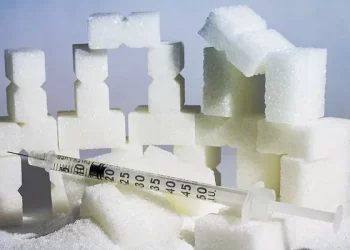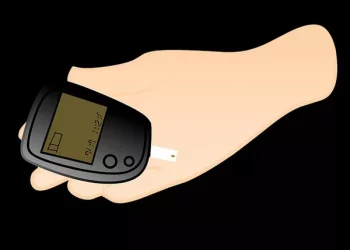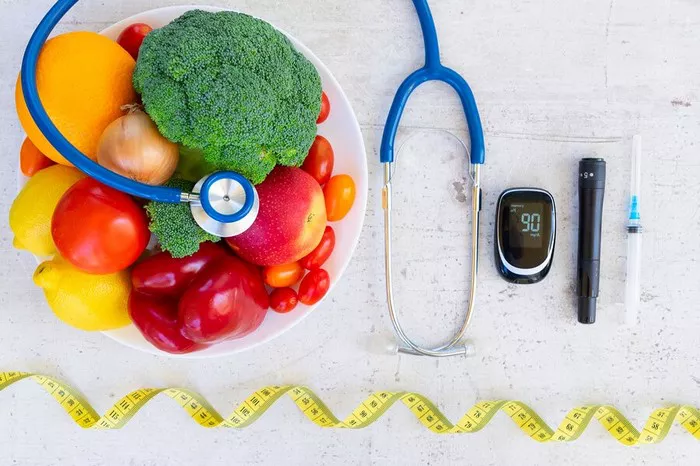Blood sugar monitoring is a critical component of diabetes management and diagnosis. Regularly testing blood glucose levels can help individuals with diabetes manage their condition and prevent complications. In a clinical or laboratory setting, several methods are employed to accurately measure blood sugar levels. These tests are designed to provide healthcare providers with essential information about a patient’s metabolic health and to monitor the effectiveness of treatment plans.
This article delves into the different types of sugar tests conducted in laboratories, exploring their procedures, accuracy, and the role they play in managing diabetes. From fasting blood sugar tests to the oral glucose tolerance test (OGTT), each test provides valuable insights into a person’s blood glucose levels and their overall health.
Introduction to Blood Sugar Tests
Blood sugar tests are commonly used to diagnose and monitor diabetes, a condition characterized by elevated blood sugar levels. Diabetes can be diagnosed based on symptoms, risk factors, and lab test results. Monitoring blood glucose levels through various laboratory tests is essential for detecting diabetes early, managing the condition, and adjusting treatment plans accordingly.
There are different ways to measure blood sugar, each serving a distinct purpose. These tests help identify the presence of diabetes, determine the type of diabetes, assess the risk of complications, and guide the physician in adjusting the treatment regimen. The most common tests conducted in a laboratory include:
- Fasting Blood Sugar Test (FBS)
- Oral Glucose Tolerance Test (OGTT)
- Random Blood Sugar Test (RBS)
- Glycated Hemoglobin (HbA1c) Test
- Postprandial Blood Sugar Test
- Continuous Glucose Monitoring (CGM)
In this article, we will focus on how sugar tests are performed in the lab and their clinical significance.
1. Fasting Blood Sugar Test (FBS)
The fasting blood sugar test is one of the most commonly used methods to monitor blood glucose levels in a laboratory setting. It measures the level of glucose in the blood after the patient has fasted for at least 8 hours, typically overnight. This test is crucial in diagnosing diabetes, as elevated fasting blood sugar levels are indicative of insulin resistance or impaired insulin production.
Procedure:
Preparation: The patient is asked to fast for 8 to 12 hours before the test. Water is allowed during fasting, but no food or sugary beverages should be consumed.
Blood Sample Collection: A healthcare provider draws a small blood sample from the patient’s vein, usually from the arm, using a needle and syringe.
Lab Processing: The blood sample is then sent to the laboratory for analysis. The glucose concentration in the blood is measured using a blood glucose meter or an automated laboratory analyzer.
Results: A fasting blood sugar level of 100 mg/dL to 125 mg/dL is considered prediabetes, while levels above 126 mg/dL on two separate occasions are diagnostic of diabetes.
Significance:
The fasting blood sugar test is a reliable indicator of how the body is managing blood sugar after a period of fasting. High fasting blood sugar levels suggest that the body is not producing or utilizing insulin effectively, which is the hallmark of diabetes.
2. Oral Glucose Tolerance Test (OGTT)
The oral glucose tolerance test is a more comprehensive test that helps diagnose diabetes, particularly when the fasting blood sugar test yields inconclusive results. The OGTT is especially useful in diagnosing gestational diabetes during pregnancy and assessing the risk of type 2 diabetes.
Procedure:
Preparation: The patient is asked to fast for at least 8 hours before the test. The test is usually done in the morning after a good night’s rest.
Initial Blood Sample: A blood sample is taken from the patient to measure their fasting blood glucose level.
Glucose Consumption: After the initial blood draw, the patient is given a glucose drink that contains 75 grams of glucose dissolved in water. The drink is consumed within 5 minutes.
Subsequent Blood Samples: Blood samples are taken at regular intervals, typically at 30 minutes, 1 hour, 2 hours, and sometimes 3 hours after drinking the glucose solution. This allows the lab to measure how well the body processes the glucose over time.
Lab Processing: The glucose concentrations in the blood samples are measured at each time point using laboratory equipment.
Results:
- A blood glucose level higher than 200 mg/dL at the 2-hour mark indicates diabetes.
- Levels between 140 mg/dL and 199 mg/dL suggest prediabetes.
- A normal result is less than 140 mg/dL.
Significance:
The OGTT evaluates how efficiently the body processes glucose after a large dose, simulating the sugar intake from a meal. It is considered the gold standard for diagnosing gestational diabetes and provides insights into insulin resistance and the body’s ability to regulate blood sugar over time.
3. Random Blood Sugar Test (RBS)
The random blood sugar test is conducted without regard to the timing of the patient’s last meal. This test is often used for quick screening or when a patient shows symptoms of high blood sugar, such as excessive thirst, frequent urination, or unexplained weight loss.
Procedure:
No Special Preparation: The random blood sugar test can be performed at any time of the day, regardless of when the patient last ate. There are no special preparation requirements for this test.
Blood Sample Collection: A healthcare provider will draw a blood sample, typically from the patient’s arm or finger. The sample is processed immediately in the laboratory.
Lab Processing: The sample is analyzed for glucose concentration using automated analyzers or glucose meters.
Results:
- A random blood sugar level higher than 200 mg/dL, accompanied by symptoms of diabetes, suggests diabetes.
- Normal blood sugar levels for a random test are generally below 200 mg/dL.
Significance:
The random blood sugar test is often used in emergency situations or for initial diabetes screening. A high random blood sugar level, especially with symptoms of hyperglycemia, is a strong indication that diabetes may be present. However, a confirmatory test, such as the fasting blood sugar test or OGTT, is often required to make an official diagnosis.
4. Glycated Hemoglobin (HbA1c) Test
The HbA1c test, also known as the A1c test, measures the average blood glucose level over the past 2 to 3 months. It is one of the most widely used tests for diagnosing and managing diabetes because it reflects long-term blood sugar control, unlike other tests that provide a snapshot of blood sugar at a specific point in time.
Procedure:
Preparation: No special preparation is required for the HbA1c test, and fasting is not necessary.
Blood Sample Collection: A blood sample is drawn from the patient’s vein, typically from the arm, using a syringe or needle.
Lab Processing: The blood sample is analyzed in the lab for the percentage of hemoglobin molecules that have glucose attached to them. This process involves separating and measuring the glycated hemoglobin, which correlates with average blood glucose levels over the previous months.
Results:
- An HbA1c level below 5.7% is considered normal.
- A level between 5.7% and 6.4% indicates prediabetes.
- A level of 6.5% or higher suggests diabetes.
Significance:
The HbA1c test provides a long-term view of blood glucose control, making it an essential tool in managing diabetes. It helps clinicians evaluate how well diabetes treatments are working over time and whether adjustments are needed. For individuals with diabetes, maintaining an HbA1c level below 7% is generally recommended to reduce the risk of complications.
5. Postprandial Blood Sugar Test
The postprandial blood sugar test measures the blood sugar level after eating. It is typically performed 2 hours after the patient has consumed a meal and provides insights into how the body handles glucose after food intake.
Procedure:
Preparation: The patient may be asked to fast for a period before the test, depending on the doctor’s recommendation.
Meal Consumption: The patient consumes a meal with a known amount of carbohydrates.
Blood Sample Collection: A blood sample is drawn 2 hours after the meal.
Lab Processing: The blood sample is analyzed to determine how much glucose is present in the blood after digestion and absorption.
Results: Elevated postprandial blood sugar levels can indicate poor glucose control and suggest the presence of diabetes or impaired glucose tolerance.
Significance:
The postprandial blood sugar test is useful for assessing how well the body processes glucose after a meal, providing important information about insulin function and the effectiveness of diabetes management.
6. Continuous Glucose Monitoring (CGM)
Although not typically performed in a lab, continuous glucose monitoring (CGM) provides valuable real-time data about blood glucose levels. CGM devices measure glucose levels continuously throughout the day, providing a dynamic picture of blood sugar fluctuations.
Procedure:
Device Placement: A small sensor is inserted under the skin, usually on the abdomen or arm.
Data Collection: The sensor measures glucose levels continuously and sends data to a wearable device or smartphone.
Analysis: The collected data is analyzed to identify trends, fluctuations, and patterns in blood glucose levels.
Results: Healthcare providers can use CGM data to adjust treatment plans, diet, and exercise regimens.
Significance:
CGM is an invaluable tool for individuals with diabetes who need to closely monitor their blood sugar throughout the day. It provides real-time feedback, allowing individuals to take proactive steps to manage their condition.
Conclusion
Sugar testing in a laboratory setting is an essential part of diagnosing and managing diabetes. Each test—whether it is the fasting blood sugar test, oral glucose tolerance test, or HbA1c test—provides valuable insights into a patient’s blood glucose control and metabolic health. These tests help healthcare providers monitor the progression of diabetes, evaluate the effectiveness of treatment plans, and make necessary adjustments to improve patient outcomes.
Understanding the different types of sugar tests and their significance empowers individuals with diabetes to take control of their health and make informed decisions about their care.
Related topics:
What is the Target Glucose Level for Diabetes?























